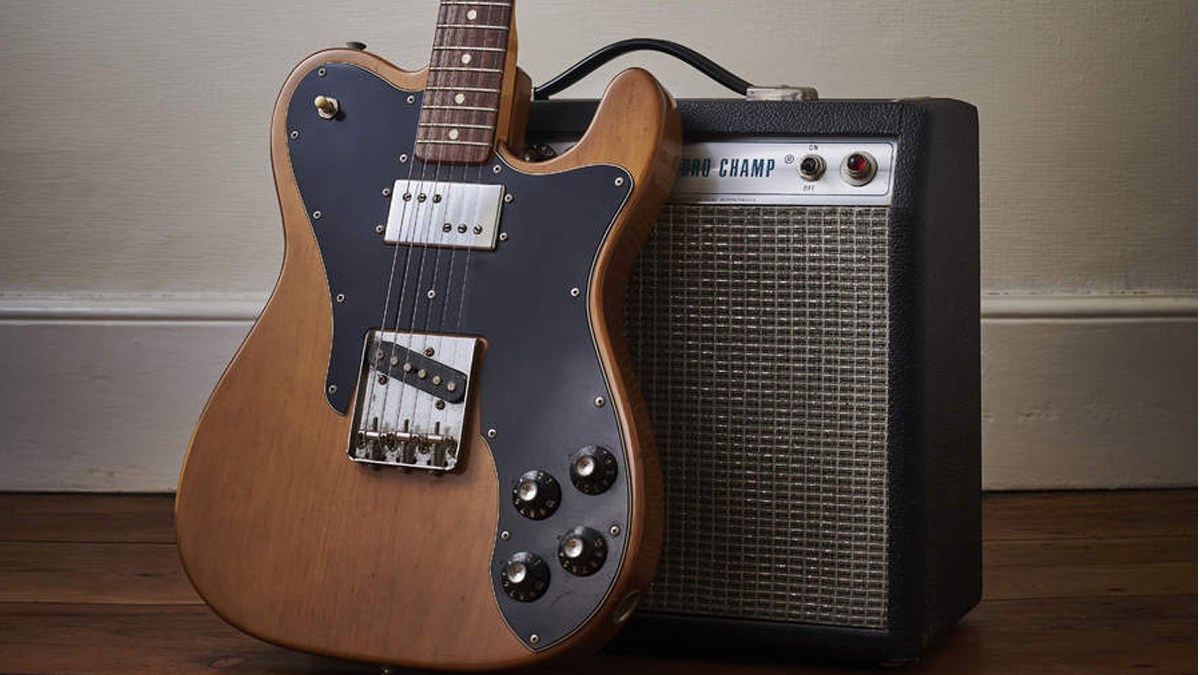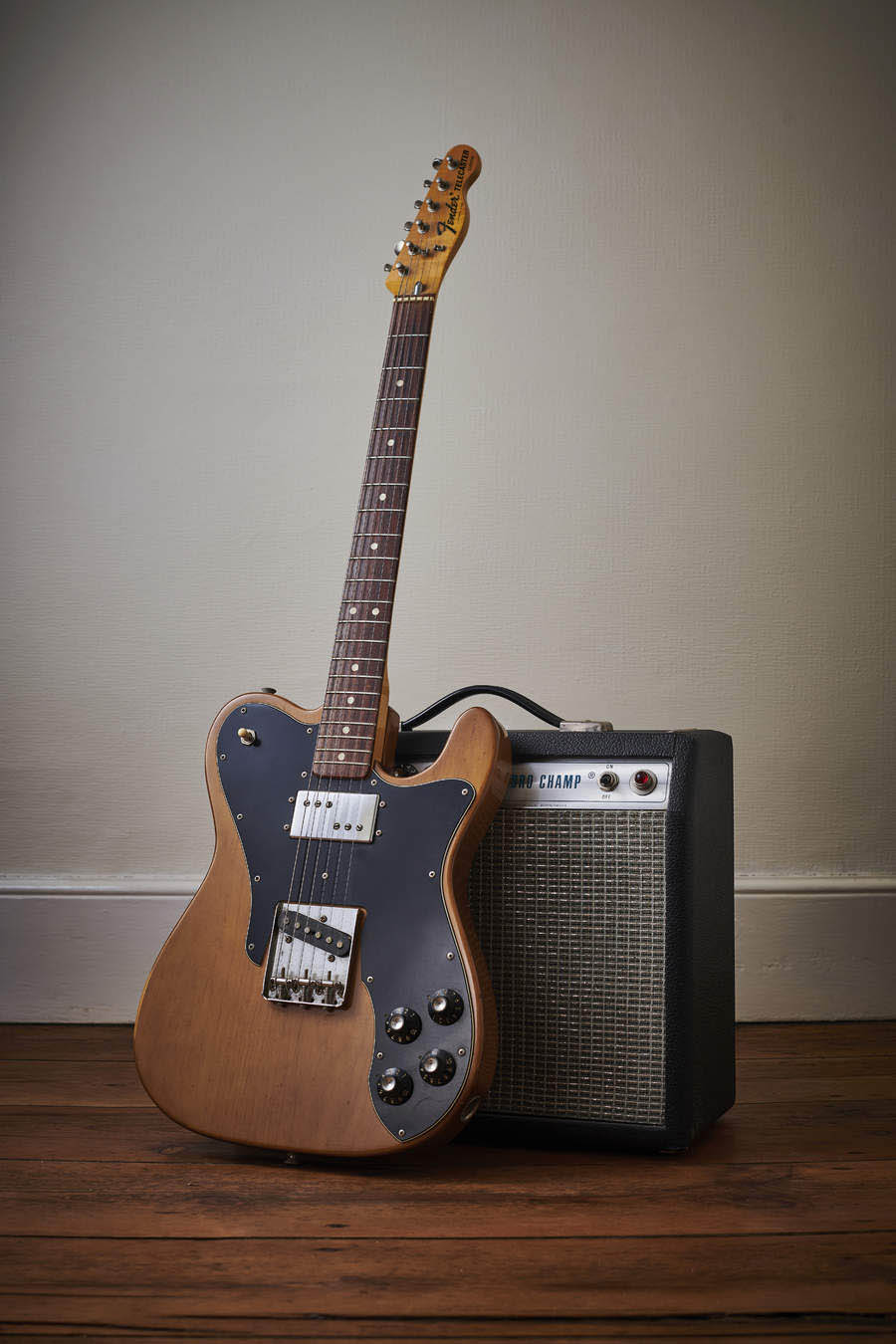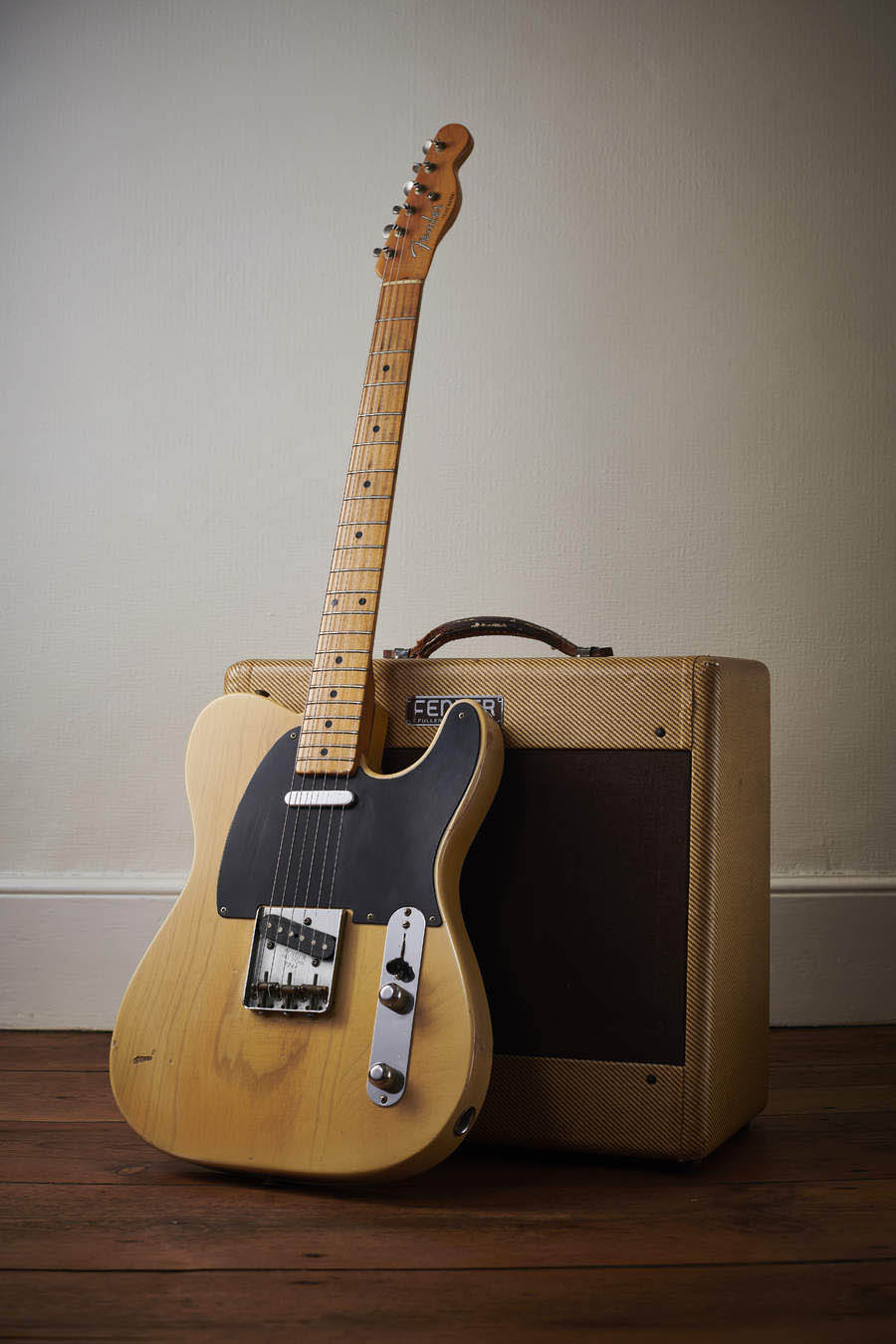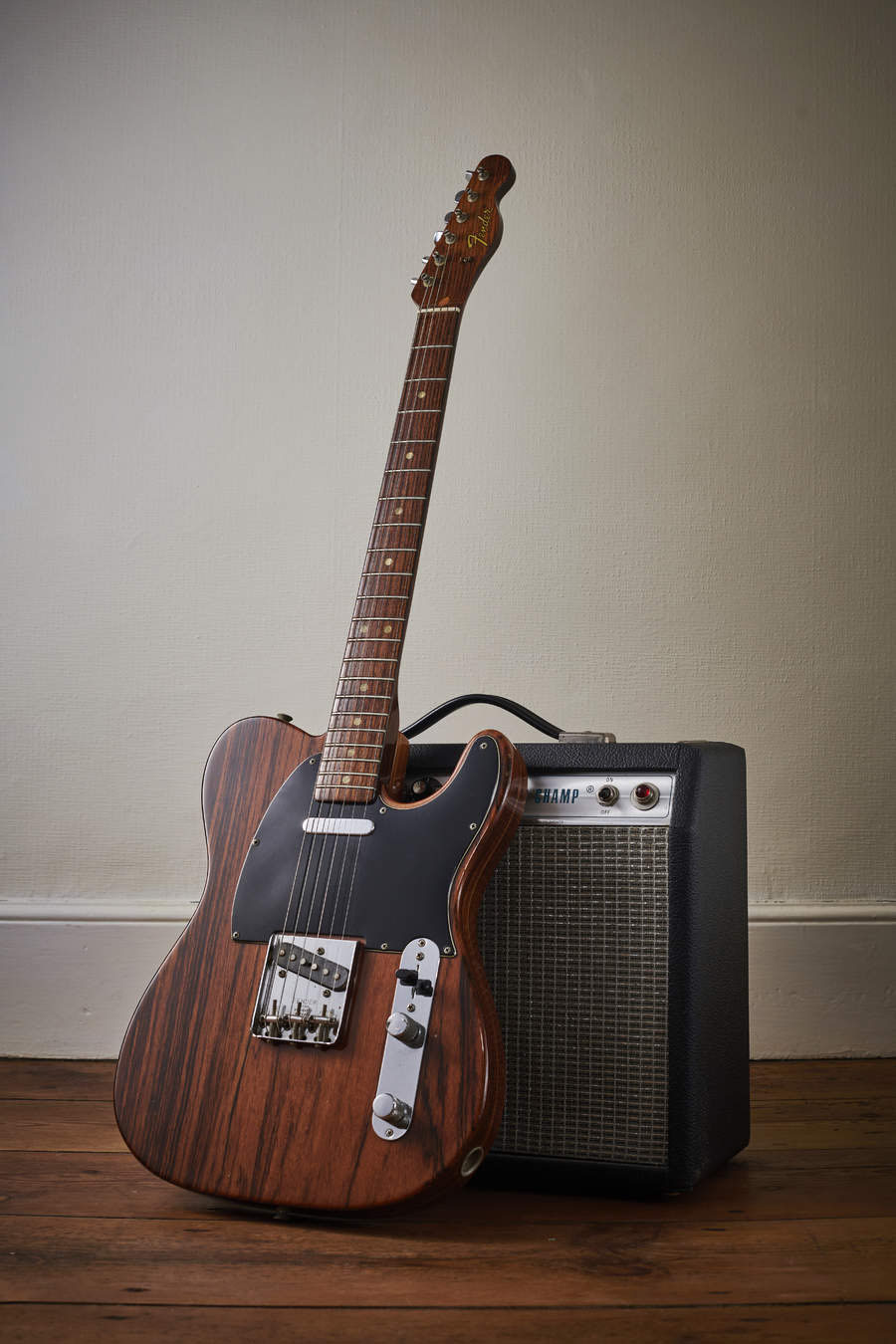Classic gear: 1970s Fender Telecaster Custom
The reimagined Custom is a far cry from Fender’s golden era namesake

There are two unique versions of the Fender Telecaster Custom. The first appeared in catalogues from 1959 and was intended as an upmarket alternative to the regular Telecaster.
With its “custom treatment of the body” – including a three-tone sunburst finish over alder along with top and back binding – it stood apart from the standard ash-bodied Telecaster’s more austere blonde finish. However, with the same pickups, electronics and hardware, both models function identically as instruments.
During the late 60s and early 70s, Fender experienced a creative boom and began to experiment further using the Telecaster as a hotbed for new ideas. Subsequently, in 1968, the semi-acoustic Telecaster Thinline was released, along with the short-lived flower power-inspired Paisley Red and Blue Flower Telecasters. The following year saw the introduction of the George Harrison-endorsed Rosewood Telecaster.
Replacing the single-coil neck pickup with a humbucker was a popular modification at the time
This spirit of innovation continued into the next decade and in 1971, following Fender’s recruitment of Seth Lover – the inventor of Gibson’s fabled PAF humbucker – the Telecaster Thinline was endowed with a pair of Seth’s new ‘wide-range’ humbuckers in place of conventional single-coil Tele pickups for a completely new sound.

The 1974 Fender Telecaster Custom has a six-digit serial number stamped on the rear of the headstock (typically between 540000 and 590000 during 1974). Its headstock is a traditional Telecaster-style headstock with bullet truss rod nut; two metal ‘butterfly’ string trees; black with gold outline CBS ‘Fender’ logo and black ‘Telecaster Custom’ decals. The plastics are three-ply (b/w/b) elongated scratchplate; four black Gibson-style metal cap knobs (independent ‘Vol’ and ‘Tone’ pickup controls); white pickup selector switch tip, and there is a ‘wide-range’ humbucker with adjustable polepieces and Fender logo chrome cover in the neck and a standard Tele bridge single-coil.


• 1959
Telecaster Custom released; front/back body binding; sunburst finish standard
• 1972
Original Telecaster Custom (model number 11-1400) discontinued
• Mid-1972
New version (model number 11-0700) appears; 1x wide-range humbucker (front)
• January 1973
Debut list price $315; sunburst finish standard; rosewood fretboard or fretted maple neck
• 1975
6x individually adjustable bridge saddles replace 3x twin saddles
• 1976
Serial number relocates from neckplate to front of headstock
• 1977
Black Strat-style knobs replace black metal cap Gibson-style knobs
• September 1980
Final list price $675; choice of standard finishes in Black, Natural, Wine or Tobacco Sunburst
• 1981
Dropped from Fender price list
As inspired as Fender was to implement these new designs, the early 70s also marked the end of the road for some models due to underwhelming sales. Thus, in 1970 the single-pickup Esquire and Esquire Custom models were dropped from the line (having been in production since 1950 and 1959 respectively), followed by the Rosewood Telecaster in 1972.
That same year, the original Telecaster Custom model also ceased production and a markedly different design took its place with the same moniker. Featuring a regular Tele bridge pickup and a wide-range humbucker in the neck position, and Gibson-style controls, the revamped Telecaster Custom appeared distinct not only from its predecessor but also from the rest of the Tele range, both in terms of form and function.
Replacing the single-coil neck pickup of a Telecaster with a humbucker was a popular modification at the time as many players felt they lacked usability, particularly in the ever more popular world of hard rock. Fender’s ‘official’ acknowledgment of such preferences in the form of the Telecaster Custom and the top-of-the-range dual wide-range humbucker Telecaster Deluxe (released in 1973) were obvious steps into Gibson territory in a bid to cover ground on both sides of the Fender/Gibson divide.
Get The Pick Newsletter
All the latest guitar news, interviews, lessons, reviews, deals and more, direct to your inbox!
Due to its association with Keith Richards, the Custom is perhaps the most prominently successful of the wide-range humbucker Teles, though none were ultimately considered a great success; it was discontinued in 1981 along with the Deluxe, following the Thinline’s demise in 1979.
Throughout its production, the 70s Telecaster Custom changed relatively little in terms of design. Much like its previous namesake model it was originally available in a sunburst finish as standard along with custom colour options.
These were initially limited to a choice of four – Blond, Black, Natural and Walnut – although by late 1977, following the phasing out of custom colours in the middle of that decade, a larger choice of standard finishes were offered – including Sunburst, Blond, White, Black, Natural, Walnut, Antigua and Wine. By 1980, this had been significantly reduced to a choice of either Black, Natural, Wine or Tobacco Sunburst.
- Guitarist would like to thank Adrian Hornbrook.
Rod Brakes is a music journalist with an expertise in guitars. Having spent many years at the coalface as a guitar dealer and tech, Rod's more recent work as a writer covering artists, industry pros and gear includes contributions for leading publications and websites such as Guitarist, Total Guitar, Guitar World, Guitar Player and MusicRadar in addition to specialist music books, blogs and social media. He is also a lifelong musician.
Epiphone brings one of Gibson’s most desirable one-off finishes to the masses with Guitar Center-exclusive Widow Les Paul – but it’s been given a twist
"A traditionally spec'd, workhorse machine that sounds like a Les Paul should while offering some limited-edition aesthetics": Gibson Les Paul 60s Double Trouble review











